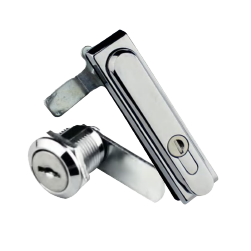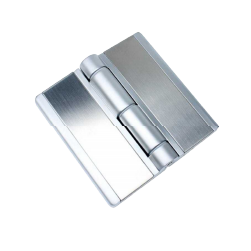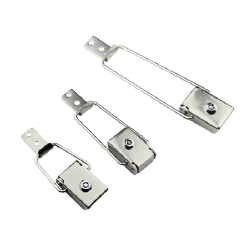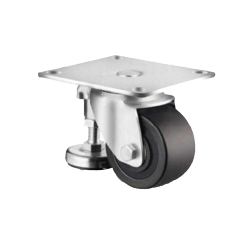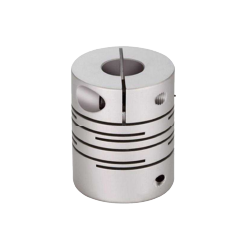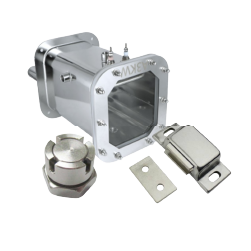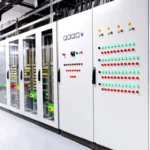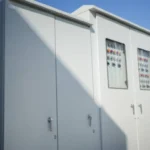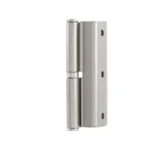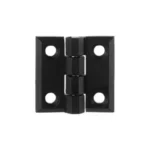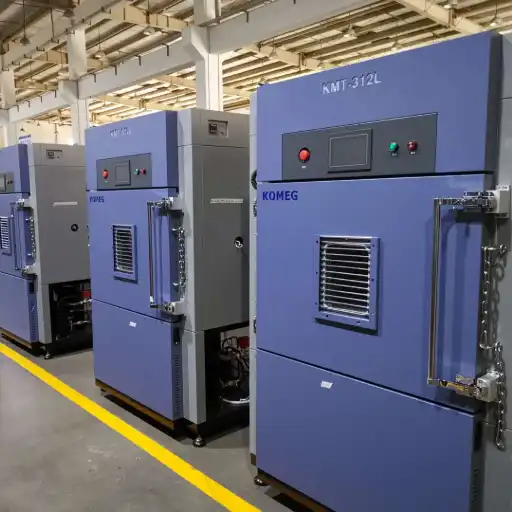
The industrial setting requires strong solutions. In the enclosure hardware industry, the compression latch is a monument of engineering that is aimed at stable security and uncompromising functionality. This guide aims to break down the compression latch to give a full picture to the layman and the professional. We will step by step examine how it works, its inherent benefits, and the complex factors that inform its choice, use, and tailoring, and finally arrive at an informed opinion on how to collaborate with a trusted manufacturer.
What is a Compression Latch & How It Works
A compression latch is a special component of hardware designed to form a secure, vibration-resistant, and frequently sealed enclosure on panels, doors, and access points. A compression latch, unlike a conventional latch, does not simply hold a door or panel in a closed position but instead pulls the panel into tight contact with its frame, exerting a specified compressive force. This is a core move towards its high performance.
The working principle of a compression latch may be explained as a two-step process with a purpose:
1. Engagement and Positioning: The first step is to rotate a cam or pawl to position it behind the frame. This is the step that takes the panel near the frame, and preliminary closure is achieved. In this stage, the latch mechanism is placed in the next compression action. Here, the design of the cam and its engagement with the frame is important, so that it is properly aligned before the final pull.
2. Compression and Sealing: After the engagement, a secondary action is done by the user, usually by lever, knob, or key locking mechanism. This move converts rotational or linear movement into a strong pull. The cam is pulled toward the inside, pushing the door or panel firmly against the frame of the enclosure. It is this inward movement that the compression aspect expresses. The grip range of the latch accommodates the panel thickness to provide effective compression in a wide range of panel and frame configurations.
Key Benefits for Security and Performance
The inherent design of a compression latch translates into a distinct set of advantages, elevating it beyond the capabilities of conventional latch lock mechanisms. These benefits are not merely incremental improvements but represent foundational enhancements in security, durability, and operational quality.
- Vibration and Noise Reduction. Vibration is always a threat to the integrity of hardware in any dynamic environment where machines are at work or cars are on the road. Normal latches may become loose with time, cause distracting rattling sounds, and structural fatigue. A compression latch, however, is an active puller of a panel against its frame with a constant force. This compressive force is a natural dampener, virtually removing resonant vibrations and the noise they generate, thereby helping to create a quieter working environment and increasing the life cycle of the latch and the equipment it is attached to.
- Superior Environmental Sealing Combined with an appropriate gasket, the compressive force of the latch provides an airtight and watertight seal of formidable strength around the periphery of the panel. This is an important characteristic of applications that need environmental protection since it eliminates the entry of dust, moisture, and other corrosive substances that may destroy delicate internal parts. The strong sealing property plays a key role in attaining high IP (Ingress Protection) ratings and is necessary to ensure the climate control of temperature-sensitive enclosures and to shield electronics against environmental risks.
- Enhanced Security and Stability. The compression produces a firm positive closure that makes a panel much more resistant to forced entry and tampering than a standard latch. In order to enhance security, compression latches are offered with key locking features in many compression latches, which is an essential level of access control. This stability is also applied to the physical position of the panel; the uniform pressure does not allow the door to move or sink with time, which guarantees the functional integrity of the panel in the long term, and the appearance of the door is always clean.
- Improved Equipment Integrity and Aesthetics. Removing the movement of panels and providing a tight, flush fit, compression latches add to the overall impression of high quality and strong construction. This improves structural integrity and lessens wear and tear on other parts and seals, which results in reduced maintenance and increased life of the whole assembly. Moreover, the finishes are of high quality, e.g. a durable black powder coating or a polished chrome plating, which enables the latch to blend into the modern industrial design and adds aesthetic value to any enclosure or machine.
How to Select the Right Latch
The choice of the compression latch is the decision that must be carefully planned, considering a range of different factors, starting with the basic aesthetic and dimensional needs and transitioning to the exact technical specifications. This is done so that the selected latch is not only functional, but also fits in the target application.
When a general user or a user who is starting their search is concerned, the first considerations are usually basic parameters. Dimensions are paramount: the size of the latch itself, its footprint on the panel, and its projection are paramount to fit within design constraints. The latch style, be it T-handle, lever, winged knob, or recess-mounted, influences both the ergonomics and the appearance. The appearance of the materials, e.g., chrome plating or black powder coating, may also be an initial factor in matching existing hardware or visual schemes desired.
But to professional users, the choice process soon goes down to more important technical specifications:
1. Grip Range: This is arguably one of the most important technical specifications. The grip range is the range of the combined panel and frame thickness that the latch can compress. A grip range that is not specified correctly will not compress the panel well enough, or cannot be installed at all. The target panel and frame thickness must be measured accurately.
2. Load Rating: The load rating is the maximum force that the latch can take without deforming or breaking. This is essential in applications where the panels may be exposed to external forces, impact, or where the latch itself has a lot of weight (e.g., heavy access doors). The forces at work are important to define a sufficiently robust latch.
3. IP Rating (Ingress Protection): When it comes to dust and moisture protection, the IP rating is a direct indicator of the sealing ability. An IP65 latch, such as, is resistant to dust ingress and low-pressure water jets in any direction. The higher the IP ratings, the more protection. This is a very important specification when it comes to outdoor enclosures or those in wash-down areas.
4. Material Choice: The choice of material used in the latch has a direct influence on its durability, resistance to corrosion, and its ability to withstand certain environments. Typical materials are stainless steel (SUS304, SUS316 with better corrosion resistance), zinc alloy, and special plastics. The selection will be based on whether the application is subjected to harsh chemicals, salt water, extreme temperatures, or frequent use. An example is the stainless steel compression latches that are used in marine or food processing environments because they are resistant to rust and harsh cleaning chemicals.
5. Locking Mechanism: In addition to mere closure, the requirement of security determines the kind of locking mechanism. The choices include simple tool-operated cam locks and advanced key locking cylinders, padlockable designs, or even electronic integration to provide a higher level of access control.
6. Mounting Style: It can be either surface-mounted, recess-mounted (to create a flush profile), or through-hole mounted, which affects the complexity of installation and the final appearance. The cutout dimensions needed are directly proportional to the type of mounting and should be accurately aligned with the panel preparation.
With these points systematically tackled, a user is able to move beyond a general requirement to a more narrowly defined specification, which is necessary to ensure that the compression latch selected is working to its best in the context of its use.
Critical Applications in Demanding Industries
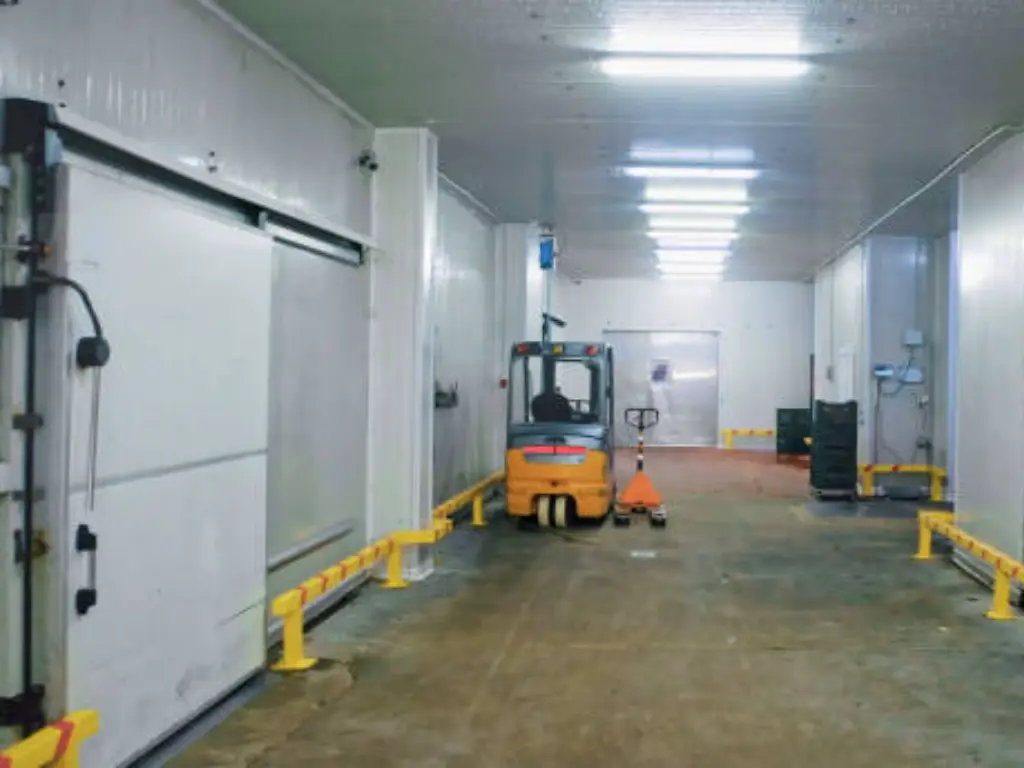
The strong construction and inherent advantages of compression latches make them essential in a range of strenuous industries. The traditional latch mechanisms are not effective in these sectors against operational challenges. Compression latches provide custom solutions, which directly solve the key pain points.
Environmental Test Chambers and Industrial Ovens: These are enclosures that are controlled to extreme conditions, often alternating between very high and very low temperatures (e.g., -70 °C to 260 °C). The major issue is that it is difficult to keep the sealing perfect, even with thermal expansion and contraction, which may cause leakage and loss of energy. Compression latches are superior here because they form and sustain a strong, consistent seal that can resist these dynamic forces and stop air or gas leakage. Their capacity to support the weight of insulated doors (which is often more than 100 kg) is also very important and makes them stable and safe.
Cold Chain Logistics and Refrigeration Equipment: In cold storage rooms, freezers, and refrigerated transport, the constant low temperature is the most important. Any failure in closing results in energy waste, spoilage, and the cost of operation. Compression latches offer the tight fit needed to avoid thermal leakage, which is essential to maintain temperature-sensitive products. The material used, usually stainless steel, is critical here due to hygiene and corrosion resistance in wet, cold conditions, and some latch models are designed to work reliably as low as -109 °C.
Telecom and Energy Enclosures: Outdoor communication cabinets, server racks, and power distribution enclosures are vulnerable to adverse environmental factors: rain, dust, extreme temperatures, and possible vandalism. In this case, compression latches that have high IP ratings (e.g., IP65 and above) are necessary to ensure the sensitive electronic components are not exposed to moisture and particulate ingress. Their locking systems are also secure key locking systems that discourage unauthorized access and protect valuable infrastructure. Anti-vibration features are also useful in the shock protection of internal connections.
Biomedical and Pharmaceutical Equipment: Hygiene, accuracy, and dependability are not negotiable in this industry. Sterile environments are frequently needed in medical equipment, laboratory equipment, and pharmaceutical processing units. Latches that are compression-based and composed of materials that are easy to clean (such as stainless steel (SUS316 is frequently used)) and which can be subjected to regular chemical sterilization (such as alcohol-based cleaning) are essential. Such characteristics as antibacterial handles, attractive and easy-to-clean finishes (mirror-polished chrome or stainless steel) add to both hygiene and user experience. Another important factor is the ergonomic design to enable easy access for the medical staff.
Aerospace, Marine, and Rail Special Equipment: Transportation applications are associated with vibration and dynamic stresses at all times. Compression latches are used in aircraft access panels, marine watertight compartments, and the interiors of train cars to ensure rattle-free operation, panel integrity during movement, and strong sealing against the elements. What is most important about them is their resistance to certain environmental conditions (e.g., saltwater corrosion in marine applications, shock resistance in rail) and their durability.
These illustrations highlight the fact that a compression latch is not just a fastening tool but a very important part of the equipment that allows safe and dependable functioning of the equipment in conditions where there is no possibility of compromise.
Why Material and Finish Truly Matter
Material Selection:
The substance employed and the application of some finish are not merely aesthetic choices of a compression latch, but they are the fundamental choices of its performance, life, and suitability to a particular use. These parameters directly affect the corrosion, wear, and long-term integrity of the operation of latch.
To make the process of selection easier, the table below gives a direct comparison of the most common materials used in the manufacturing of compression latches:
| Material | Key Characteristics | Common Applications | Considerations |
| Stainless Steel (SUS304) | Excellent corrosion resistance, high strength, durable, hygienic. | Food processing equipment, medical devices, outdoor enclosures, general industrial use. | Higher initial cost compared to zinc alloy. |
| Stainless Steel (SUS316) | Superior corrosion resistance, especially against chlorides and acids. | Marine environments, chemical processing plants, coastal installations. | The premium choice for the most aggressive environments; highest cost. |
| Zinc Alloy | Good strength, cost-effective, excellent for complex shapes, highly plateable. | Indoor electrical cabinets, server racks, general machinery access panels. | Requires a protective finish (e.g., chrome, powder coat) for corrosion resistance. |
| Aluminum Alloy | Lightweight, good strength-to-weight ratio, naturally corrosion-resistant. | Aerospace, transportation, applications where weight is a primary concern. | Generally not as strong as steel or zinc alloy. |
| Plastics (e.g., PA, ABS) | Lightweight, corrosion-proof, can be colored, good for insulation. | Lightweight enclosures, electronic housings, applications requiring non-conductivity. | Lower load-bearing capacity and temperature resistance than metals. |
Finish Application:
The coating placed on a latch is mainly used to perform two important tasks: protection and beauty.
- Corrosion Protection: Coatings such as black powder coating or chrome plating offer a sacrificial or barrier coating that protects the underlying metal (e.g., zinc alloy, iron) against corrosive components. The efficiency of such protection is commonly measured in salt spray testing (e.g., 400 hours to 1000 hours of resistance), an important parameter in products that are subjected to severe environments. An excellent finish can significantly increase the service life of a latch in a corrosive environment.
- Aesthetics and Tactile Quality: Finish has a great influence on the look and feel of the latch. A high-polished chrome finish is a high-end appearance, commonly sought after in medical or consumer-facing industrial equipment. Black powder coating has a durable, matte, and frequently industrial look that is not susceptible to scratches and chips. The accuracy of the surface treatment, such as the number of polishing steps (e.g., 5 steps of polishing a mirror effect by KUNLONG, versus 3 steps of a typical mirror polish), directly influences the result of smoothness, fingerprint resistance, and perceived quality. Such attention to detail makes the latch not only work properly but also makes the equipment look better in general.
Custom Compression Latch Solutions
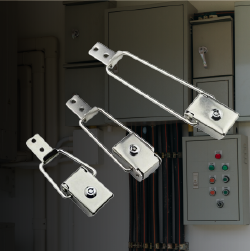
Although there are an enormous number of standard compression latches to fit the typical industrial needs, there are countless cases when standard products are not enough. Special application requirements, special functional needs, or a wish to have a different brand integration require special compression latch solutions. Here, the design and engineering skills of a manufacturer come in handy.
The customization may include a wide range of changes and completely new designs, covering different elements of the latch:
- Functionality: Customization may add certain functional needs beyond the simple opening and closing. This may involve incorporating IoT sensors (e.g., smart handles that indicate the state of closure), special locking (e.g., two-stage opening, anti-panic), or special spring-assisted movements of a particular panel. An example is KUNLONG, which has created proprietary self-suction doors and smart handles, which have advanced the limits of what a latch can do.
- Appearance: Aesthetic customization may include individual colors (KUNLONG has more than 30 color options, which is more than 10+ of many competitors) and surface finishes (more than 10 specialized processes), as well as custom shapes that fit the design language of a product. This goes as far as engraved or embossed logos, which strengthen brand identity.
- Dimensions and Fit: Custom dimensions are essential in cases of non-standard panel thicknesses, special grip range needs, or limited spaces. This guarantees an ideal fit and best compression without making changes to the main equipment design.
- Material and Corrosion Resistance: Although standard materials are strong, there are extreme environments that require highly specialized alloys or special protective coatings that are not the norm. Specification of custom materials guarantees that the latch can withstand very corrosive chemicals, extreme temperatures, or special mechanical stresses.
- Adherence to Special Requirements: Some industries (e.g., medical, aerospace) have very strict regulatory requirements, which may demand custom features or certifications not offered by standard latches.
The ability of KUNLONG to provide these tailor-made compression latch solutions is due to its powerful research and development. We have a team of more than 30 well-experienced engineers with an average experience of 10 years in the industry. This shared knowledge enables us to interact with clients in some ways:
- Concept to Reality: We collaborate with clients who have an innovative concept of a future product or a particular pain point to address. Our team converts these abstract requirements into concrete designs, creates prototypes, and optimizes performance.
- Product Enhancement: To our clients who have existing products, we offer the skill of improving latch design depending on the market trends, user feedback, and changing performance needs.
- Joint Development with Shared IP: When a particular requirement of a client may not warrant the full development cost of a mold, yet we see a larger market opportunity, KUNLONG frequently shares the development cost and intellectual property. This joint venture has led to more than 70 distinct products that have KUNLONG copyrights.
We are also dedicated to innovation, which is reflected in our yearly investment of 15 percent of sales revenue in R&D, resulting in more than 120 new products every year. We are efficient, and we can deliver simple 3D design sketches in 7 days and launch completely new products in 45 days. This design-raw material selection-processing integrated approach within a lean supply chain guarantees that between the first consultation with a client and the delivery of the final product, KUNLONG provides the best support for the custom compression latch solutions.
Partner with an Expert for Your Ideal Solution
Your project needs a hardware solution that is performance and reliability-oriented. Being a manufacturer of standard latches with almost 20 years of experience, KUNLONG offers a wide range of standard latches with more than 3000 models, as well as the engineering expertise to develop completely custom solutions.
The next step is to apply:
- Browse Our Standard Products: View our entire catalog and download 3D models to directly use in your design.
- Talk about Your Special Requirements: Call our 30+ engineers to design a compression latch to your specifications.
- Request a Consultation: Find out how our integrated hardware solutions can improve the quality and performance of your product.
Visit kunlong today or contact us directly. Partner with a manufacturer dedicated to your success.

